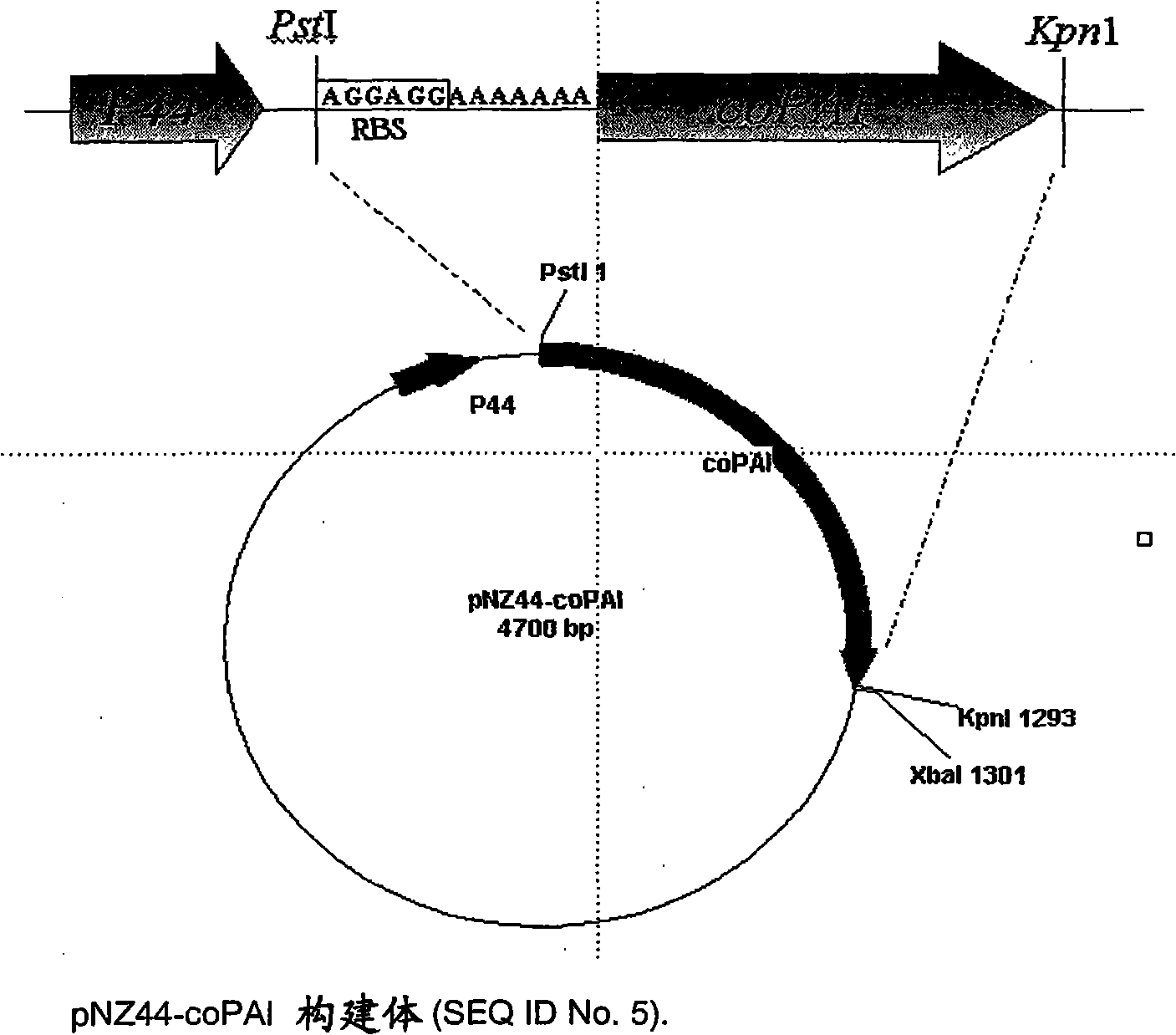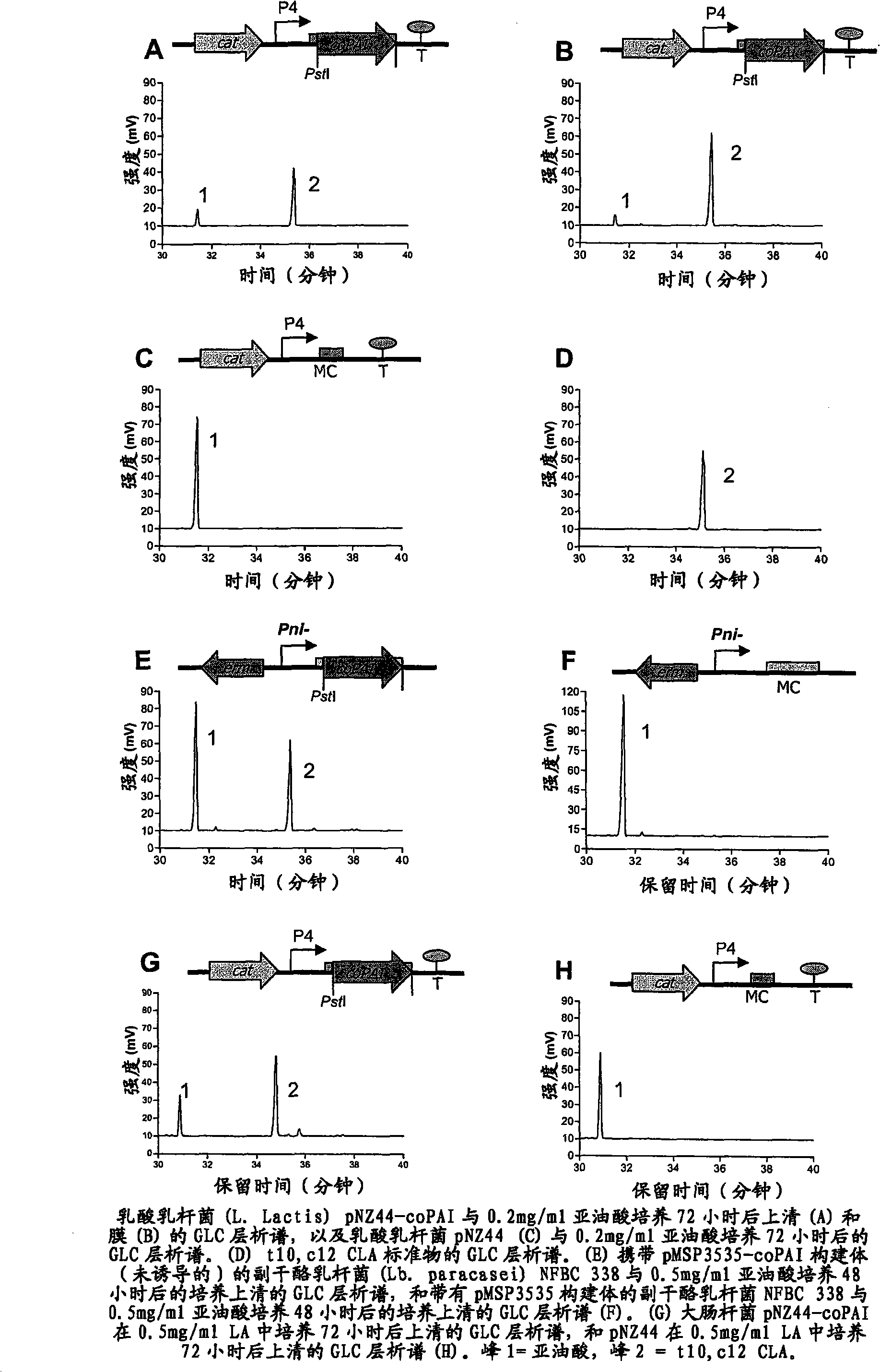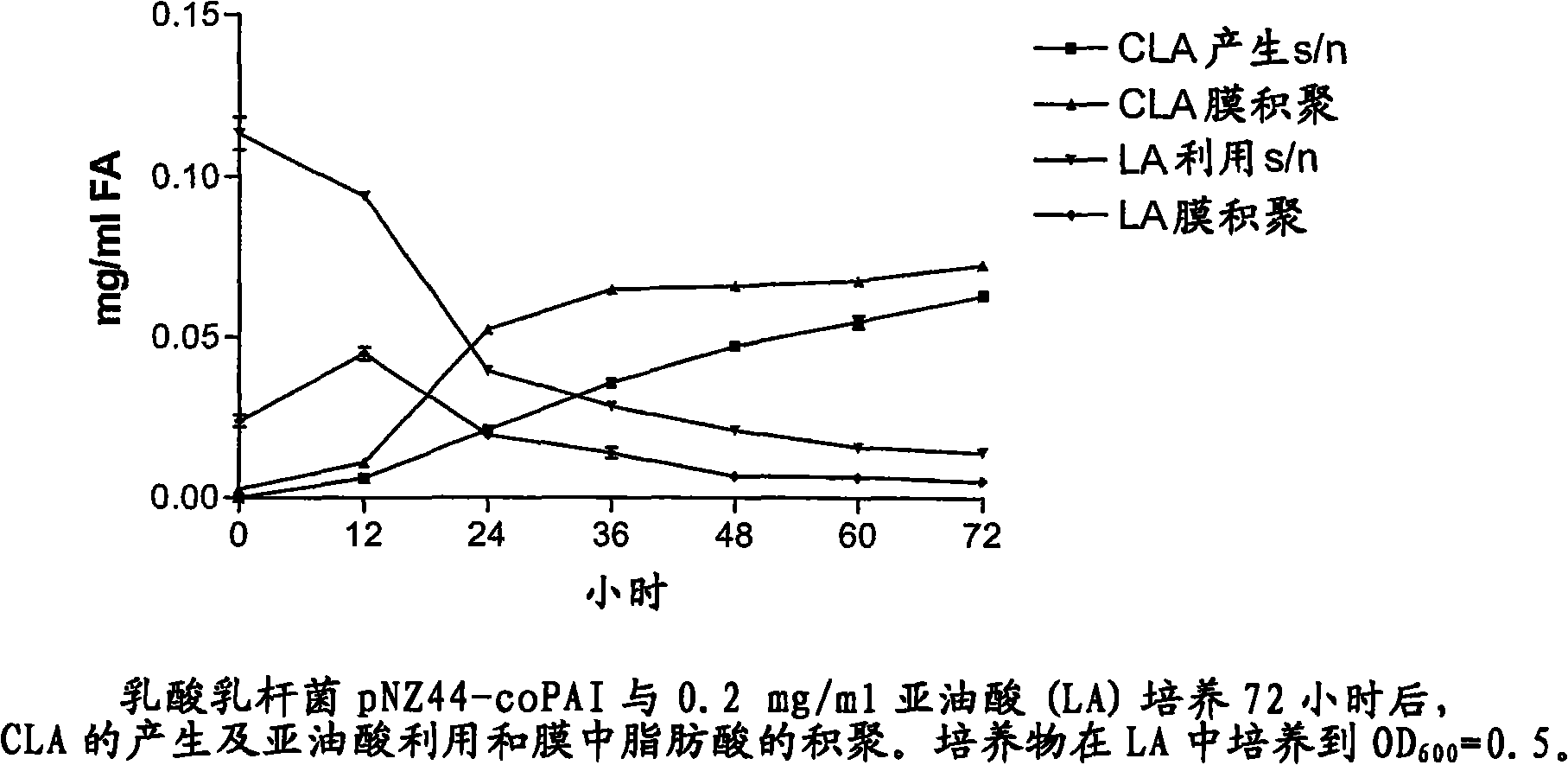Process for the production of trans-10, cis 12 octadecadienoic acid
A product, the technology of microorganisms, applied in the field of anti-10, can solve the problems of economic disadvantages, insufficient purity of CLA for industrial production methods, low space time yield, etc.
- Summary
- Abstract
- Description
- Claims
- Application Information
AI Technical Summary
Problems solved by technology
Method used
Image
Examples
Embodiment 1
[0255] Cultures and media.
[0256] Lactococcus lactis NZ9800 (a derivative of Lactobacillus lactis NZ9700 that does not produce nisin due to the deletion of the nisA gene, containing the nisRK signal transduction gene integrated in the chromosome) in M17 (Difco Laboratories, Detroit Michigan, USA) liquid medium and / Or culture in agar containing glucose (0.5% w / v) at 30°C. The probiotic strain Lactobacillus paracasei subsp. NFBC 338 (Lactobacillus paracasei ssp. Paracasei NFBC338) (Lactobacillus paracasei NFBC 338) was previously isolated from the human gastrointestinal tract (GIT) from Cork Synthesis, Ireland under a restricted material transfer agreement. University acquired. Lactobacillus paracasei NFBC 338 was routinely cultured overnight (about 17 hours) in MRS liquid medium (Oxoid Ltd., Hampshire, UK), under anaerobic conditions with an anaerobic culture gas bag (Merck, Darmstedt, Germany) The anaerobic culture tank was cultivated at 37°C. Lactobacillus carrying plas...
Embodiment 2
[0257] Example 2: DNA manipulation.
[0258] Two oligonucleotide primers were designed to amplify the complete linoleic acid isomerase (coPAI) from the original construct pC33.1-coPAI (linoleic acid isomerase gene in plant vector; BASF, Germany) Produces t10,c12CLA. The forward primer ERcoPAI1 (SEQ ID No.3) contains a Pst1 restriction endonuclease site and a ribosome binding site (RBS), with 4 extra bases at the 5' end, between the RBS and the start of the gene. 7 additional bases; 5'-AAAACTGCAGAGGAGGAAAAAAAATGGGTTCCATTTCCAAGGA-3' (SEQ ID No. 3). The reverse primer ERcoPAI2 (SEQ ID No. 4) contained a Kpn1 restriction endonuclease site and 3 extra bases at the 5' end; 5'-CGGGGTACCTCACACGAAGAACCGCGTCA-3' (SEQ ID No.: 4). Using 200ng of plasmid DNA (pC33.1-coPAI) as a template, a 1278bp DNA was amplified with high-fidelity extension in an Eppendorf MastercyclerGradient (Eppendorf) as described by the supplier (Roche Diagnostics Limited, East Sussex, England). coPAI gene. The PC...
Embodiment 3
[0259] Example 3: Screening of CLA products.
[0260] Standard cis-9, trans-11 and trans-10, cis-12 CLA was purchased from Matreya (Matreya Inc., PA, USA), linoleic acid was purchased from Sigma (Sigma chemical, MO, USA) ). Lactobacillus, Lactobacillus paracasei, and E. coli clones were tested for their ability to convert free linoleic acid (0.1-0.5 mg / ml) into trans-10, cis-12CLA as follows; 1% inoculum of the overnight culture was transferred to 10ml of liquid medium, cultured to OD 600nm About 0.5. Linoleic acid (0.1-0.5 mg / ml) was then added and the culture induced with 30-50 ng / ml nisin (prepared from solid milk containing 2.5% (w / v) nisin, Sigma, N-5764), The incubation was continued for an additional 48-72 hours. Cultures for time experiments were grown in larger volumes of liquid medium and 10 ml samples were taken every 12 hours. After 48-72 hours of incubation, the culture was centrifuged and fatty acids were extracted from the supernatant, dried under nitrogen ...
PUM
 Login to View More
Login to View More Abstract
Description
Claims
Application Information
 Login to View More
Login to View More - R&D
- Intellectual Property
- Life Sciences
- Materials
- Tech Scout
- Unparalleled Data Quality
- Higher Quality Content
- 60% Fewer Hallucinations
Browse by: Latest US Patents, China's latest patents, Technical Efficacy Thesaurus, Application Domain, Technology Topic, Popular Technical Reports.
© 2025 PatSnap. All rights reserved.Legal|Privacy policy|Modern Slavery Act Transparency Statement|Sitemap|About US| Contact US: help@patsnap.com



